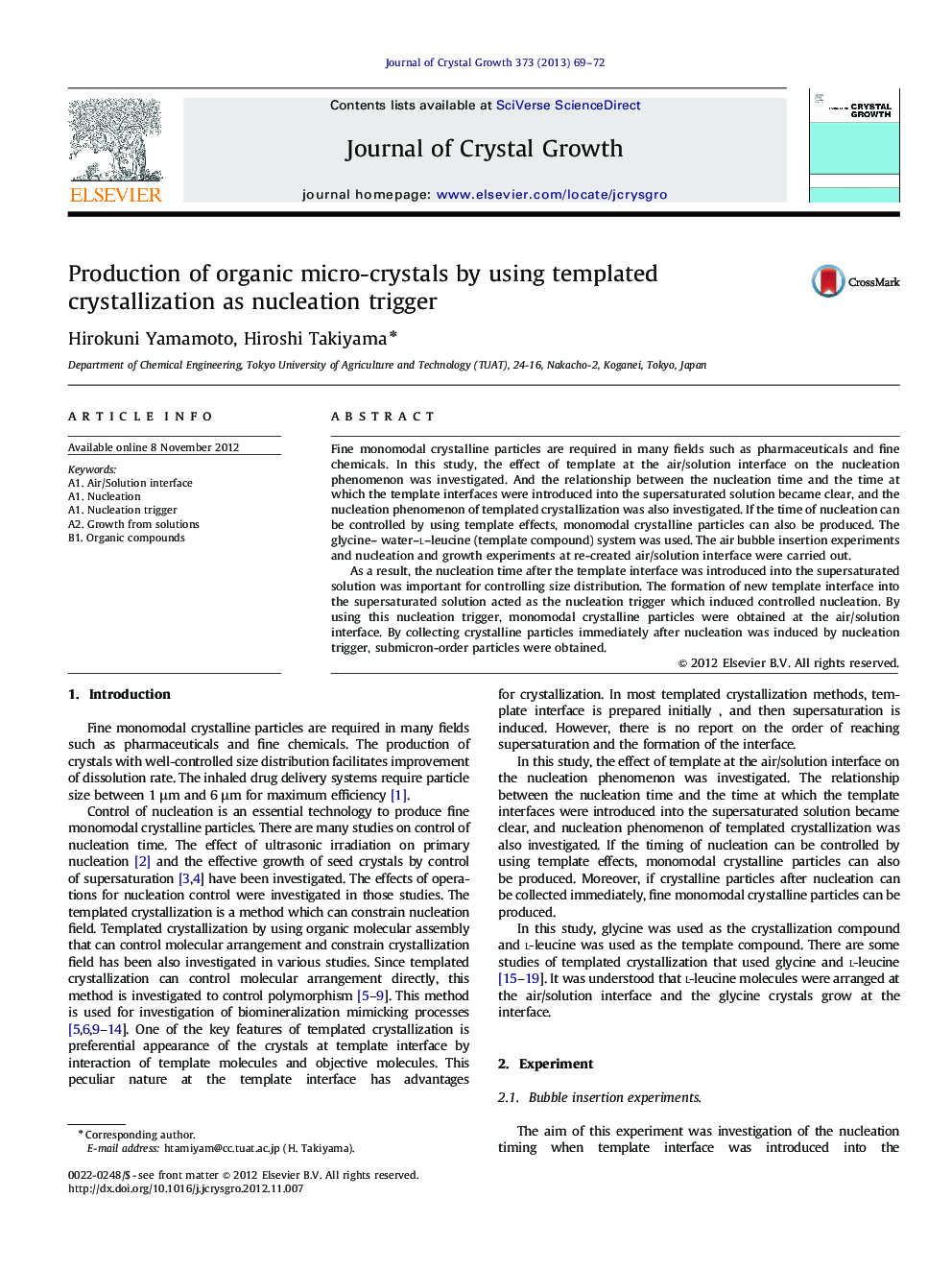| کد مقاله | کد نشریه | سال انتشار | مقاله انگلیسی | نسخه تمام متن |
|---|---|---|---|---|
| 1790942 | 1524456 | 2013 | 4 صفحه PDF | دانلود رایگان |

Fine monomodal crystalline particles are required in many fields such as pharmaceuticals and fine chemicals. In this study, the effect of template at the air/solution interface on the nucleation phenomenon was investigated. And the relationship between the nucleation time and the time at which the template interfaces were introduced into the supersaturated solution became clear, and the nucleation phenomenon of templated crystallization was also investigated. If the time of nucleation can be controlled by using template effects, monomodal crystalline particles can also be produced. The glycine– water–l–leucine (template compound) system was used. The air bubble insertion experiments and nucleation and growth experiments at re-created air/solution interface were carried out.As a result, the nucleation time after the template interface was introduced into the supersaturated solution was important for controlling size distribution. The formation of new template interface into the supersaturated solution acted as the nucleation trigger which induced controlled nucleation. By using this nucleation trigger, monomodal crystalline particles were obtained at the air/solution interface. By collecting crystalline particles immediately after nucleation was induced by nucleation trigger, submicron-order particles were obtained.
► Templated crystallization as the nucleation trigger was carried out.
► Using the nucleation trigger, monomodal crystalline particles were obtained at the air/solution interface.
► Submicron-order glycine crystals were obtained continuously.
Journal: Journal of Crystal Growth - Volume 373, 15 June 2013, Pages 69–72